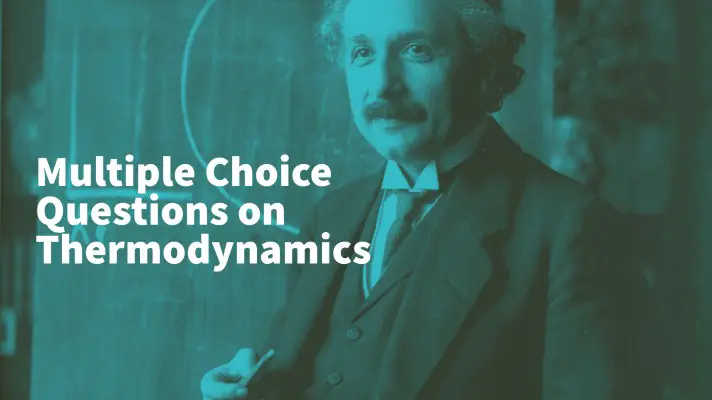Here is a list of few Multiple-Choice Questions on Thermodynamics. You can evaluate yourself and can come to know how much you are strong in the basics of a thermodynamics.
Further, it will help you in taking preparation for competitive examinations.
You may download the PDF format of this article. For downloading the same, go to the end of the article and click on the “PDF” icon.
Now, let us move into the MCQ questions.

MCQ Questions or Viva Questions on Thermodynamics
Appear for the test and evaluate yourself. There are total 20 numbers question in this MCQ based test.
Questions are made from the laws of Thermodynamics, basic properties, and work-heat transfer.
Overview
If you want to get knowledge on an open system, closed system, and isolated system; intensive and extensive properties, pure substance, homogeneous and heterogeneous system; triple point and critical point and the laws of thermodynamic systems then you go through the following text.
Short questions on the thermodynamic system
What are the different types of thermodynamic systems?
The thermodynamic systems are of three types:
- closed system
- open system
- isolated system
What is a closed system?
A closed system is a system which does not exchange mass with its surrounding. Hence, it has closed boundaries. But it may exchange energy with its surrounding.
What is an open system?
An open system exchanges heat or mass or both with its surrounding.
What is an isolated system?
An isolated system neither exchanges mass nor exchanges heat or energy with its surrounding. Thus, it is completely an isolated system.
What is an adiabatic system?
A thermodynamic system that is thermally isolated from its surrounding is called an adiabatic system. Therefore, no heat transfer occurs in this system.
Laws of Thermodynamics
State the zeroth law of thermodynamics.
When a substance A is in thermally equilibrium with substance B and substance C separately; the substances B and C are also in thermal equilibrium.
Based on zeroth law, we can measure the temperature.
State the first law of thermodynamics.
We can neither create nor destroy the energy. It transfers from one form to another.
State the second law of thermodynamics.
It is impossible to create a cyclic engine that converts all the heat supplied to it into the equivalent amount of work.
Also, there is another statement that says heat flows from a hot body to a cold body.
State the third law of thermodynamics.
Every action has an equal and opposite reaction.
Which are the intensive properties and extensive properties?
The properties that do not depend on the mass are intensive properties. The properties that varies with mass are extensive properties.
Pressure, temperature and specific volume, specific density are intensive properties whereas density, volume, energy are extensive properties.
Thank you. Best Wishes.



